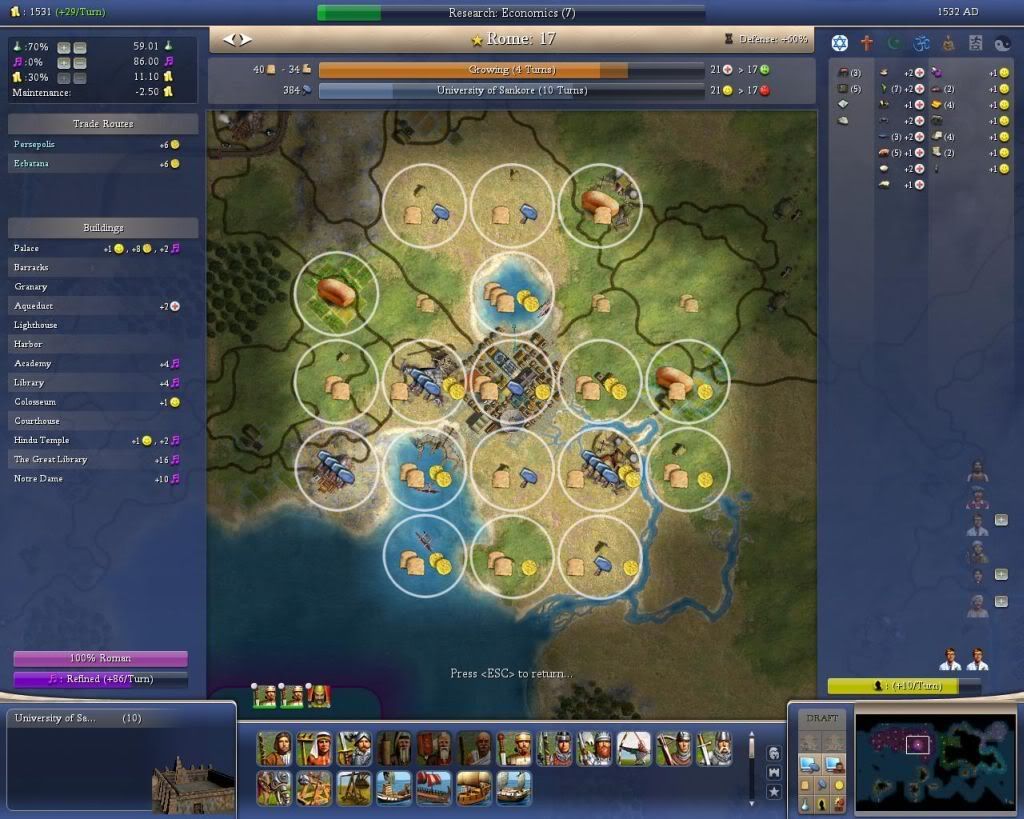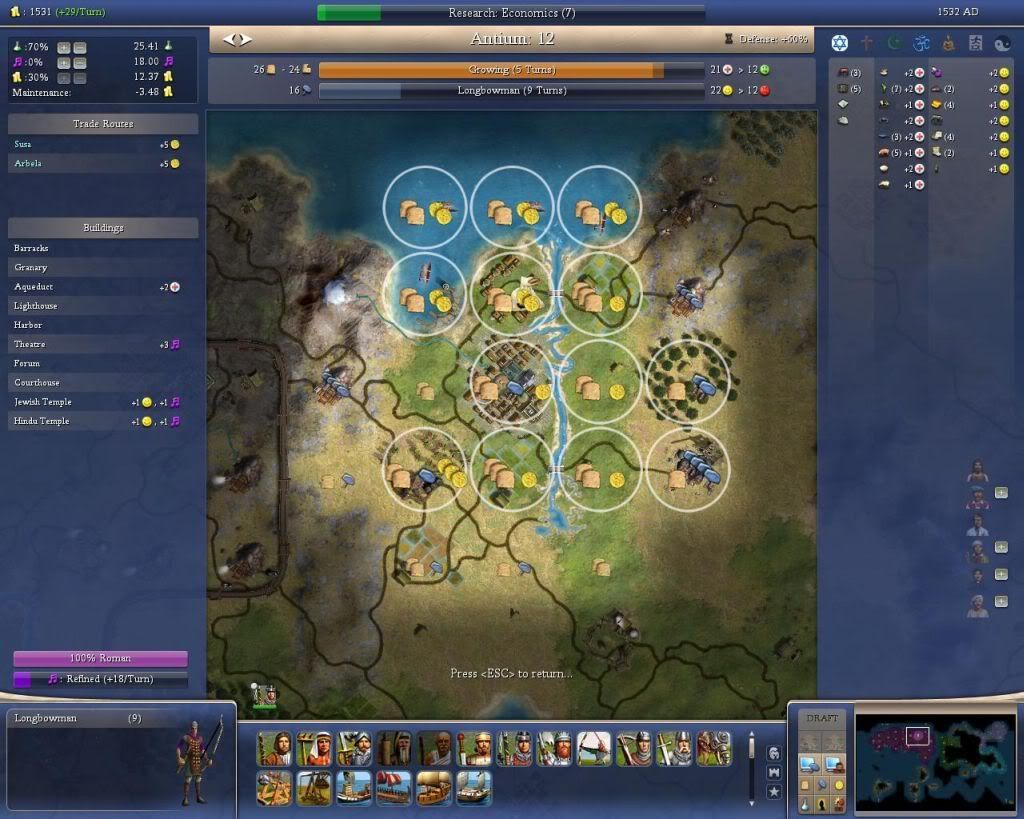I have been playing CIV for about 6 months now and have had a great time. I have learned much from the threads and strategy guides on these forums. I hope to get some help with my city development in this thread and to then try to edit it to some kind of guide/example to help others.
I do well on Noble, but still feel like my city building is pretty random. I think that I find some good places to build but then don't develop my cities better than a mediocre level. I understand the ideas about specializing cities for production or commerce or GP, but I just don't know which city to use to which purpose.
I have included my first 4 cities from my current game. So, if you have some advice to offer on one of the cities, please feel free to let me know. I am sure there is not one right way to do it, but any discussion will be informative.
I have also attached the save if someone really wants to dig in.
Thanks for any comments/advice
City 1 - Rome

City 2 - Antium

City 3 - Cumae

City 4 - Neapolis (captured)

I do well on Noble, but still feel like my city building is pretty random. I think that I find some good places to build but then don't develop my cities better than a mediocre level. I understand the ideas about specializing cities for production or commerce or GP, but I just don't know which city to use to which purpose.
I have included my first 4 cities from my current game. So, if you have some advice to offer on one of the cities, please feel free to let me know. I am sure there is not one right way to do it, but any discussion will be informative.
I have also attached the save if someone really wants to dig in.
Thanks for any comments/advice

City 1 - Rome

City 2 - Antium

City 3 - Cumae

City 4 - Neapolis (captured)


 per specialist.
per specialist. rather than annoyed
rather than annoyed ![Pissed [pissed] [pissed]](/images/smilies/pissed.gif)






